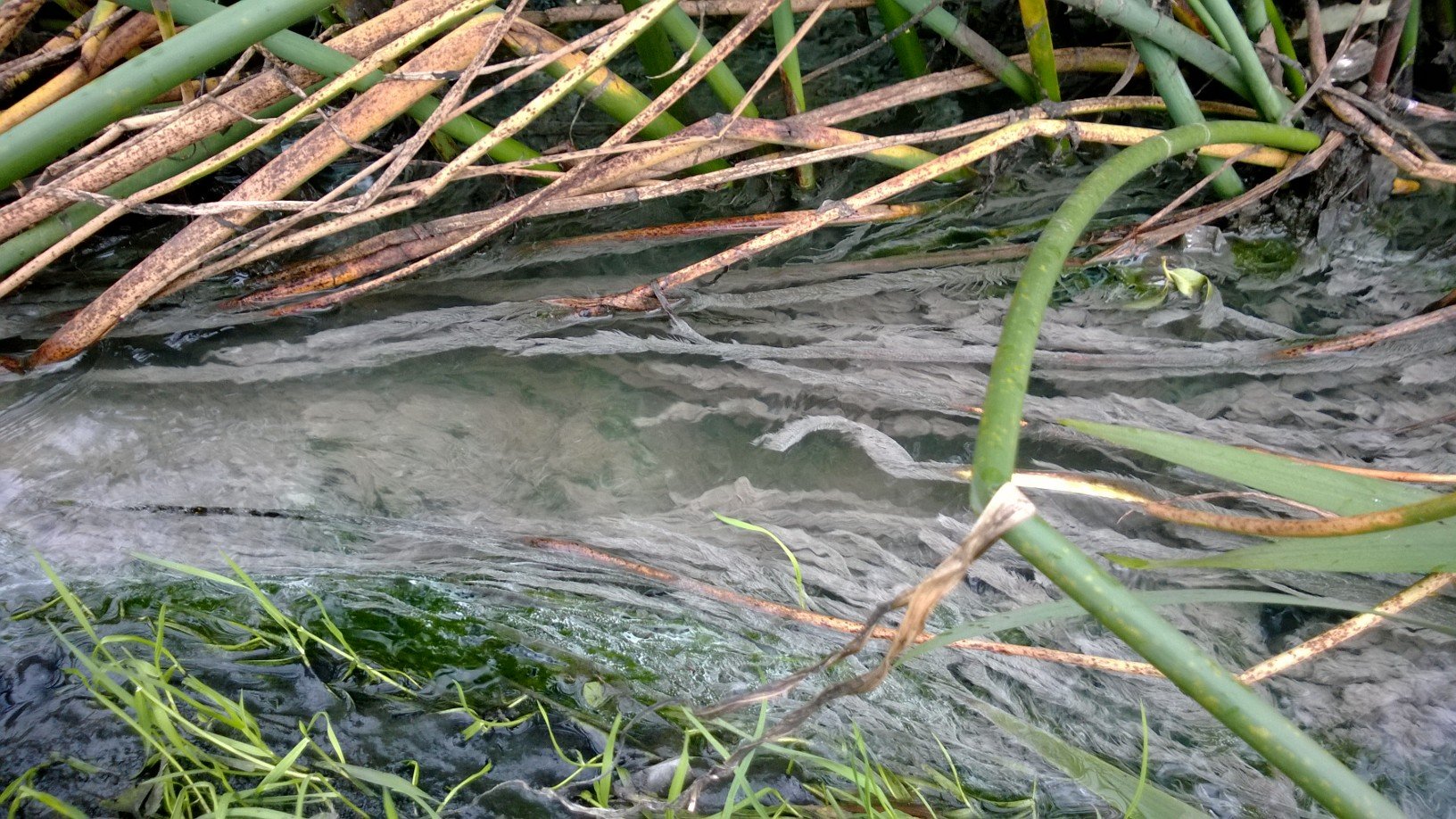Homes Polluting Rivers
The Moselle in 2013. Sewage fungus coating the plants
The Moselle in 2024. Sewage fungus still grows in the river
Enforcement is failing our rivers
These photos were taken more than ten years apart and show the failure of Ofwat, the Environment Agency, Thames Water and Haringey Council to save the Moselle in Lordship Recreation Ground. This systemic failure poisons every river in London.
The grey feathery growth coating the river plants is called sewage fungus. It feeds on the nutrients in wastewater. Thousands of properties have plumbed their washing machines, dishwashers, toilets etc into the drainpipe. It is just meant for rain. This wastewater should go to a sewage works for treatment of course. In two thirds of London there are separate pipes. One for sewage and one for rain. The latter flow under streets to an outfall that empties into a river. Connecting wastewater to it is a crime, breaking the Environmental Permitting Regulations 2016.
London Zoo surveys rivers and estimates there are more than 1,000 outfalls that take wastewater from properties across the capital and dump it in our rivers. It’s the property owner that is breaking the law, not Thames Water.
Thames Water has the job of finding these houses or blocks of flats but Ofwat hasn’t allowed the company enough money to fund more detective work. The same number of outfalls are to be cleaned up between 2025-2030 as were from 2015-2020. We pressed Thames Water to increase the target for 2020-25 and after hundreds of people backed our called they upped it to 750. But Ofwat didn’t allow a bill increase to cover this work. Then on the 13th March this year, at a meeting hosted by the Mayor of London they confirmed the target will stick at 200. This isn’t good enough.
The Environment Agency is the enforcer for the environment. We want it to use the law to punish big property developers if their blocks of flats pollute rivers. This would deter sloppy building work and send a strong message. Currently developers get away with it.
The Moselle River in north London
The river flowing through Lordship Recreation Ground in Tottenham spends the first half of its journey underground in a channel called a culvert . The Moselle rises in Muswell Hill and Hornsey but by the time it emerges in the park it is heavily polluted, a dead river. The riverbed plants are covered in sewage fungus, which feeds on the waste in the Moselle’s water. In the summer it stinks. Signs saying “Polluted Waters” dot the bank.
This was summer 2024, but it was just like this in 2014. This is wastewater from properties in Crouch End, Muswell Hill, Hornsey and Wood Green. Here rain that falls on roofs goes down drain pipes and into a network that empties into the Moselle. Countless homes and businesses have connected appliances, sinks and toilets to pipes that go straight to the river. This is illegal. It is a criminal offence to pollute a river. They should be plumbed into the sewer pipe that takes it all to the sewage works.
London Waterkeeper takes action
Ten years ago we exposed the reason why it was so bad here. Haringey Council had the biggest backlog of these problems in the Thames Region and had just axed the job of the person leading that work. Thames Water is great at finding properties that are misconnected. They can trace the pollution from where it enters a river, back through the drains to individual properties. When they knock on the door most people connect the pipes properly. Those that don’t, for whatever reason, are passed onto the Local Authority for action. When the Council writes a letter the vast majority of problems are sorted out. The Council can carry the work out and bill the owner. This threat is enough, few go to court.
Two months after we put pressure on Haringey Council they had appointed a new officer. The problem is that this approach can never do more than try to keep up with the new misconnections. There is too little awareness and too little enforcement. In 2018 the Zoological Society of London published a report that indicated there were more than 1000 outfalls spewing wastewater into rivers across London. Easily preventable problems that were allowed to kill rivers. They had worked with volunteers who walked along rivers in dry weather to spot outfalls that were flowing with human waste. At the same time Thames Water was asking people to give their opinion on the Business Plan for 2020-2025. Over the previous 5 years they had rectified 200 polluted surface water outfalls (all their budget allowed). They proposed increasing this to 500, half the number we wanted to see. We asked hundreds of people to press Thames Water and they proposed sorting out 750 outfalls between 2020-25. We wrote a letter to Ofwat supporting this plan. But Ofwat refused to allow them any increase. This means that the target is still 200 polluted outfalls. Ofwat’s failure to give the environment a high enough priority is a key reason why the situation hasn’t improved.
The Environment Agency hasn’t been as effective as we needed it to be. Some of the properties that are misconnected are large, new housing developments. The property developers haven't met their legal duty not to pollute a river. The regulator should have prosecuted them as high profile cases. This would have raised awareness and prevented many of these problems. The Environment Agency can do this using the Environmental Permitting Regulations 2016. It’s failure to make an example of polluters means there has been little progress over the last ten years.




